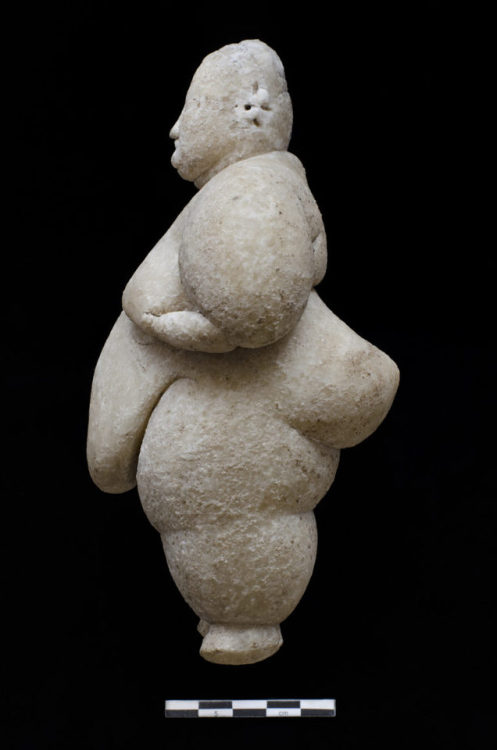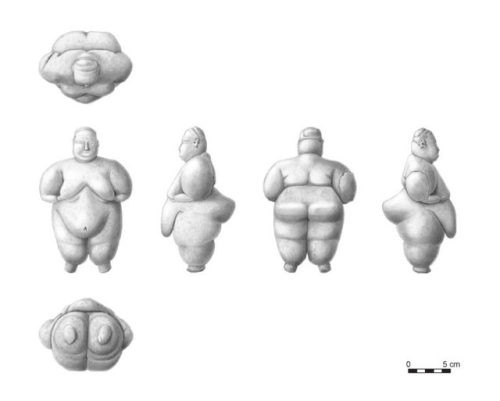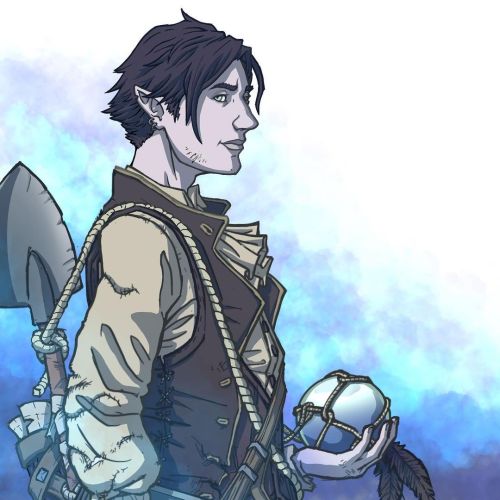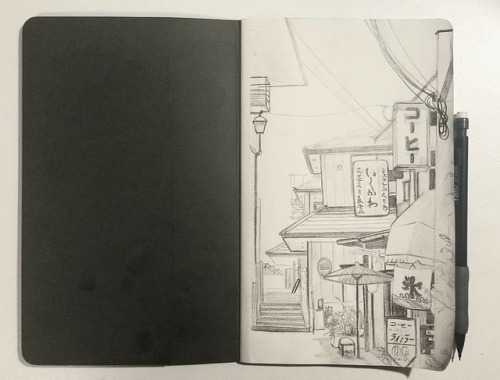#archaeologist
Archaeologists in Turkey Find Neolithic Female Statuette Intact
The Neolithic site of Çatalhöyük, Turkey, consists of two settlement mounds — the remains of houses continually built over old ones — that have yielded many treasures since archaeologists began excavations in the 1960s. One of the most remarkable artifacts to emerge recently is a slightly weathered but fully intact, female anthropomorphic figure carved of marble — a rare find at the UNESCO World Heritage Site that illustrates one ancient craftsperson’s great level of skill. Archaeologists with the Çatalhöyük Research Project, which has explored the site since 1993, found it this summer in one of the site’s earliest structures; they estimates it dates to about 5500–8000 BCE.
Post link



The Sleeping Lady. Temple Period, 4000 - 2500 BC.
This clay figure of a reclining lady was found in one of the pits of the Hypogeum in Hal Saflieni in Malta. It has traces of red ochre paint and is thought to represent a “mother goddess”, even though she may equally be a representation of death or eternal sleep. Now on display at the National Museum of Valetta, Malta.
Yet another DnD character, this time an archeologist who once dug an undead patron out. Yeah, didn’t feel like drawing better stuff
.
.
.
#dungeonsanddragons #dnd #fantasy #highfantasy #elf #halfelf #moonelf #warlock #undeadwarlock #archaeologist (at Stuttgart, Germany)
https://www.instagram.com/p/CPoreHVDdZs/?utm_medium=tumblr
Post link
Kirby: Squeak Squad (Nintendo DS, 2006)
Animal“Can’t dig everywhere” is quitter talk, you’re not going to make it onto the archaeological team like that!
Post link
Hello Everyone!
I have revived my Tumblr to find many messages asking “what do I do next” when it comes to Archaeology/Anthropology. So I thought I’d create a post explaining what I went through to get to where I am now, and hopefully give some information to those who are pondering on the next steps to take in this truly wonderful field of study.
Quick academic about me:
- Undergrad: Ivy League, Major: Anthropology-Geography, Minor: Religion
- After Undergrad: 1 year of Cultural Resource Management (CRM) & Substitute teaching
- Graduate School: England MSc in Archaeological Information Systems
- After Graduate: 10-month long research grant in Cambodia
- Now: (USA) Ph.D. Candidate in Anthropology, Archaeology Track
I come from a low-middle class family, all of my academics have been funded through financial aid or through grants that I’ve applied for. A lot of the time school and research can get expensive, but that doesn’t mean you have to be wealthy to pursue it!
Per usual, please feel free to DM me at any point with questions (here or IG @ aal.archaeology), I’m always happy to help to the best of my ability. Success in this field is really dependent on networking!
I’ll set this up based on the various landmarks of my academic career:
1. Undergrad
Themes: Ask for help, build your resume, write down everything
No matter where you are going to school, it is so so so important to use the resources around you. Becoming a professor is HARD work, and each one of your professors went through a lot to be able to stand in front of you and teach you. They’ve likely had years and years of research experience, which is probably still happening behind the scenes of teaching and grading papers. More often than not, professors want to help you, they want students to be excited about the research they’ve worked so hard on, and they want to do what they can to help you achieve your career goals.
Therefore, if there’s a class you’ve taken or a professor whose research you’re interested in, tell them. This is how I got my first experience with archaeology (before I even knew that I wanted to do archaeology). I randomly took an Anthropology class that sounded cool, and after the first class, I was like WOW I love this topic so much and I really want to know more about it. I went up to the professor that was teaching it, told her I was really interested and asked if she knew of any research opportunities available. She then hired me as a student researcher in her lab to do data entry for one of her archaeological projects in Mesoamerica, and after working for her for a few months, she asked me if I wanted to go with her and her team to Mexico for fieldwork.
(my timeline at this point: 19 years old, end of Sophomore year)
From this experience, I learned how to apply to grants within the University and funding outside of the University, and was able to FULLY fund my research experience in Mexico. During this fieldwork, I got to work with 3000-year-old artifacts, do archaeoillustration, and eventually got my own chapter published in the book that my professor wrote about the research that was done.
After I got back from Mexico, I started exploring archaeology further. A new professor entered the department who specialized in “digital archaeology,” and his research involved tracking looting patters in Syria using satellite imagery. I thought this was crazy so I then went up to him and asked if I could help him with his research. (the common theme throughout this entire process is just asking for help). From this experience, I learned that I loved the possibilities that technology brought to the study of archaeology, everything from 3D modeling to identification of sites in satellite imagery to spatial mapping in GIS. With this professor, I was able to form an “internship” with him, and continued doing that and other minor projects within the department. I ended up modifying my major to incorporate coursework from the Geography department and created my own “Digital Archaeology” major.
(my timeline at this point: 22 years old, Senior year)
As graduation began to creep closer, I had been able to get a good amount of lines on my resume. I had:
- research assistant/ data entry
- fieldwork in mesoamerica
- x2 internships with digital archaeology prof
- multiple “small” projects around the department i.e. making posters, painting 3D prints of bones,
- all of the coursework I had done on GIS/ relevant digital experience
- started a drone club at my school (it flopped, but it still counts as a line on the resume!)
All of these lines became useful when starting to think of jobs and the “next step”
UNDERGRAD HIGHLIGHTS & TAKEAWAYS:
- Ask for help, your professors are there for a reason, it will almost always lead you to new opportunities. These relationships last well beyond your graduation and definitely come in handy later, make it count!
- Write down EVERYTHING that you do. Did you help out with a conference? Write it down. Did you do a couple hours of data entry? Write it down.
- Follow your leads! I started my anth journey in Mesoamerica and ended my undergrad in Near Easter digital archaeology (and I entered college wanting to do astronomy?). Change is natural, let it happen.
2. Gap Year Between Undergrad and Grad School
Highlights: Job applications, field school, CRM, uncertainty
Something that I was always told during my undergrad was that you really need to do a field school and some CRM to be taken seriously post-grad. This shows that you actually want to be an archaeologist outside of the classroom environment. Field Schools and CRM give you valuable experience such as: excavation methodology, report writing, grant applications, teamwork, leadership, etc.
I started applying for jobs probably about 5 months before I graduated and ended up securing a job at a CRM company in LA. They liked how much I had done during my undergrad, but they really wanted me to have a field school under my belt before I started working for them. Because I had already graduated and didn’t need course credit, I was able to do my field school at a discounted price (these things really do get expensive, and this was a difference of about $2k). I think this worked out in my favor waiting until the summer after I graduated because it saved me a lot of money in the end.
After my field school was done, I started work that September inCRM. This job ended up being nothing like what I thought it would be, to be honest. I was an Archaeological Field Technician that was part-time/on-call, meaning I only got work when they needed someone to go monitor a construction site. I only got work once every month, sometimes every couple of months, so I was making hardly any money. I realized this quickly and decided to become a substitute teacher to supplement the CRM job. I HIGHLY recommend doing this if you end up in the same situation. Not only does subbing fill up all of your non-working days, but it also gives you the flexibility to choose when you can work and gives you teaching experience that you can put on your resume. That CRM experience can be really important, so it’s good to stick it out long enough to quit.
Why didn’t I like CRM? For me, my job was very sparse, included driving long hours to a construction site, sitting there all day in case archaeological material popped up, and then driving home. Sometimes it was just walking back and forth across a massive field full of cow poop looking for arrowheads, and often it felt like I was just clearing land so that a big building could be erected. I was really missing the research component to all of it. The pay was also not great.
GAP YEAR HIGHLIGHTS AND TAKEAWAYS:
What I got from this year was very valuable, even though it wasn’t necessarily that fun, however.
- I got the experience I needed in CRM
- I got some teaching experience (also volunteered to mentor clubs and research at local high schools during this time)
- I started doing some networking (I found some alumni that were doing work that I wanted to be doing and reached out to them)
- and most importantly, I realized that I really do love school and wanted to go back for my Masters
So I started looking into Masters’s programs. This is kind of a scary thing especially in the US because school is expensive. I still really wanted to do Digital Archaeology, and I couldn’t find a single program in the US had a focus in this topic, and especially couldn’t find one that I was willing to pay for.
The UK, however, had plenty of Digital Archaeology programs, and the programs were only a year long and a fraction of the price in the US. I decided to take a chance and apply, got in, and then suddenly I was moving to England. (in hindsight I really didn’t spend much time at all making this decision, but it worked out in the end).
3. Masters Program
(my timeline at this point: 23-24 years old)
I chose the program I applied to based on its focus on the techniques that I wanted to use, namely, remote sensing, GIS, and 3D modeling. I really wanted a degree qualification that spoke for itself, and therefore applied for an MSc in “Archaeological Information Systems.”
I had done some networking during my gap year and connected with an alumnus who was doing research in Cambodia using digital methods, and she offered me the opportunity to join her fieldwork. I agreed to join her in Cambodia during my degree, and also applied for a research grant for the year following my master’s degree to continue fieldwork in Cambodia.
I used this opportunity to fuel my dissertation topic and focused all of my writing and coursework throughout my grad school experience around Cambodia. While I was surrounded by people studying Roman architecture and Medieval Studies, I spent my time doing independent work and building a network in Cambodia.
This program was a great experience for the most part, I was surrounded by beautiful medieval architecture and had a great community throughout. I personally didn’t really like the UK school system compared to what I had received in the US, however. This was largely because of the way coursework was set up. (If you want to know more just DM me).
MASTERS HIGHLIGHTS AND TAKEAWAYS:
- Follow networking opportunities, and find someone doing what you want to do (or close to it) and let them help you take the steps to get there
- If you’re going to do grad school, do it in something you know you love. Don’t waste money on a program that isn’t right for you.
- Make sure that the program you apply to allows for flexibility so that you can do research on what YOU want, not what THEY want.
Halfway through my Master’s degree, I received word that I had been accepted for the research grant (Fulbright) and would spend the next year living in Cambodia doing independent research.
4. Gap Year Between Masters Program and PhD
If you’re planning on a Ph.D., I think its a really good idea to do something before applying that relates to what you want to be studying. This shows that you’re dedicated to your research and to a life in academia, and have the ability to produce something from your work.
My master’s degree was nice because 1) it was short, only a year-long, and 2) allowed me to focus research on what I was interested in. This gave me the experience I needed to lead into a year of independent research.
This year of independent research was definitely contingent on receiving the grant in the first place, and I think that I would have started job searching again had I not received it. However, the small things I did leading up to applying for it really helped in qualifying me to receive it.
I had:
- All of the undergraduate research experience
- CRM experience
- teaching experience
- fieldwork experience
- a master’s degree that focused on the region
- established a network of people in the country beforehand
- a couple “publications” from fieldwork
This grant fully funds me living in Cambodia, and has allowed me to participate in cultural exchange with some amazing people here in addition to allowing me to partake in archaeological fieldwork across the country.
Again, I cannot stress enough how important it is to network. If you like something, find someone else who likes the same thing, send them an email.
Networking got me my experience in Mesoamerica, Digital Archaeology, my CRM job, my research experience in Cambodia, and so so much more. All because I sent that first email.
5. PhD Applications
I applied to 1 school. I got in. Its a really good school. I’m still in shock.
However, I think I really did set myself up for success in this one.
The biggest advice I can give in the world of Academia is:
- NETWORK
- Talking to people who have gone through what you’re going through are the BEST help. They can mentor you through these experiences, offer you new opportunities, or lead you in the direction of someone else who can help.
- PLAN AHEAD (but be open to change)
- Okay, so you’re applying to grad school. What do you want to focus on while you’re there? What do you want to do with the degree when you’re done? Do you want to start working? Do you want to do more research? What opportunities are out there for research funding? What is the job market looking for? Is there anyone in my network that can help me get there?
- None of these have to be concrete plans, they just have to exist in some shape or form so that you have the ability to latch on to one when the opportunity arises.
If you’re doing something that you love doing, you’ll find a way to make it happen. All opportunity comes from the amount of effort you put into getting it!
Thanks for reading and best of luck on your studies!
Also Happy Anthropology Day! :)
-Lyss
Pro-tip: Establish dominance over your masters dissertation by drawing all over it. Reference @Ghinkos on Instagram
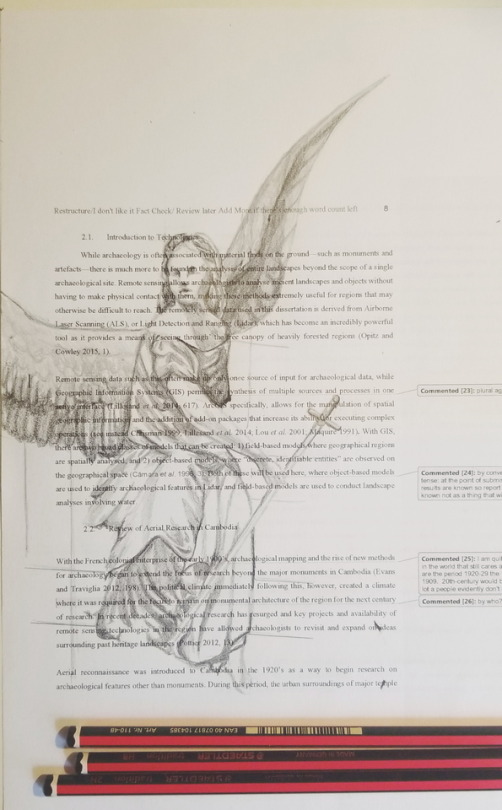
Now that I’m left to my own devices with dissertation writing, I’m going to try to take artistic mental breaks, here’s the first doodle for the journal ~ it’s been quite a while since I’ve done any drawing! . . . #コーヒー #japanese #japan #coffee #coffeeshop #draw #drawing #art #artist #pencil #anime #drawings #doodle #archaeology #dissertation #masters #studyblr #gradblr #journal https://www.instagram.com/p/ByV_sPYgAwv/?igshid=z2d9914pl91y
Post link
Day 2: 91°F, went out to the furthest sites about an hour away to ground truth. The first video was taken walking through the wooded area of a mound site, and shortly after it was taken I unknowingly dropped my phone while being swarmed by ants. I didnt realise I had lost it until about 10 minutes later and THANKFULLY we’re good archaeologists and were able to find it in the woods. 2nd photo is of a small shrine we found on a temple mound site pictured in the 3rd photo as well.
#archaeology #archaeologist #archaeologygrad #archaeologymasters #archaeologystudent #cambodia #cambodian #cambodianarchaeology #khmer #temple #asia #southeastasia #masters #fieldarchaeology #lidar #fieldwalking #gradblr
https://www.instagram.com/p/BvitjEAFWlV/?utm_source=ig_tumblr_share&igshid=uh4ehfwbp3cz
Post link
Beautiful day for some resistivity training!
.
.
#universityofyork #University #York #UnitedKingdom #malton #roman #classicalhistory #geophysicalsurvey #geophysics #archaeologygrad #archaeologist #Archaeology #digitalarchaeology #england (at Malton, York, United Kingdom)
https://www.instagram.com/p/Bt3lfqqF9IY/?utm_source=ig_tumblr_share&igshid=h2c6x7tisoy1
Post link
I’m interested in knowing what you guys are up to!!
As I enter the final term of my masters degree and begin writing my dissertation, I’m also starting to think about what my life will look like in the next couple years after graduation, and what/where I want to start planning and applying to for future experiences. Would love to hear about what you guys are up to, whether that’s in the realm of anthro/archaeology or something completely different!
Share with me your stress, accomplishments, uncertainties, and plans! Take this time to brag about what you’ve been doing, because we all deserve to feel good about our accomplishments!
Feel free to share, comment, or dm!
<3
What I’ve been up to lately:
I’m in the last term of classes for my MSc in Archaeological Information Systems, will start writing my dissertation very soon/have done a bit of research for it. Currently waiting on news from Fulbright about doing research in Cambodia for the 2019-2020 year on the site that I’m currently researching. Will be co-directing a project in Cambodia this Spring. Planning on doing a Phd, will depend on how the Fulbright turns out/ where that leads. Currently learning Japanese in hopes of living in Japan for a couple years in the future. Would love to make this relevant to what I’m doing in Digital Archaeology if I can.
Big plans & exciting things coming up!
NOVEMBER 27 - KATIE HUNT
When archaeologist Katie Hunt was diagnosed with ovarian cancer at 22, it catalyzed a deeper curiosity about cancer as an ancient disease. Delving into ancient texts and analyzing ancient human remains, Hunt discovered cancer’s presence in antiquity — recorded as early as 1,500 BCE, and in skeletal remains from as early as 6,000 BCE — but no tools existed for rigorous scientific analysis.
So, with three other women in science, Casey Kirkpatrick, Jennifer Willoughby and Roselyn Campbell, Hunt launched the Paleo-Oncological Research Organization — a network of archaeologists, oncologists and cancer researchers working to develop scientific research standards and techniques — and an open source database of physical evidence of cancer from many eras and regions.
This growing field of paleo-oncology will raise interesting questions about how biology, culture and environment affect development of the disease, helping us better understand its prevention and treatment.
“Biological anthropology — a physical science in a gentle embrace with social science—happens to be a field predominantly led by women, so I have the fortune of working with brilliant woman scientists every day,” says Hunt. “While sexism still exists in our lives, I’m privileged to witness a world in which women in science is commonplace and celebrated… And science is stronger for it!”
Text for today’s post was originally printed in a TED Fellows piece entitled “Meet 12 Badass Women Scientists… Who Also Happen To Be Women”.
Post link
People that think archaeologists are concerned with protecting the status quo or are afraid of “rewriting the history books” are so funny because every one of my archaeology courses is chock full of
“now I really don’t like this term, but we need to use it so remember it’s problematic”
“I disagree with this author a lot but I want you to make your own conclusions”
“archaeologists in the past didn’t know what they were doing and this has been recently disproven”
and my favorite, “this is what we think about this now, but once your generation does further research that will most likely change”

The oldest known temple in the world, Göbeklitepe, Urfa.

- The great temple of Athena the Parthenon at the Acropolis of Athens

Glass pomegranate. Greek, Hellenistic period, 2nd c.BC. Phoenix Museum.

Atlas / or Silenus, Theater of Dionysus, Acropolis, Athens, c. 4th century BC.
A golden Roman helmet, circa 4th century CE.


Horse Handle Lapis Lazuli Dagger khanjar, Persian, 19th Century CE.
The Al-Sabah Collection, Kuwait

Roman road at Dion, 1st-2nd c. CE

Detail of a bronze statue of Standing Parvati. Chola period, c.1200 CE, Tamil Nadu, India

Massive Roman aqueduct built in Segovia, Spain by emperor Trajan (r. 98-117 CE).

View of the Temple of Hephaestus at the agora of Athens

The ancient theatre of Dodoni, Epirus, Greece.

The Caryatids, Acropolis of Athens, Greece.

An aerial photo of Luxor Temple, Egypt.

Ship with helmsman, rowers and warriors. Greek scarab from chalcedony. 525-500 BC. MET Museum.

Melian marble relief with Heracles, Deianira and the centaur Nessus. 460-450 BC. Arch. Museum of Piraeus, Greece.

Pompeii, the city that fell under lava with a sudden explosion. Italy

Quetzalcoatl (feathered serpent), detail from Teotihuacán, Mexico.

The Minoan palace of Knossos, Crete, Greece

